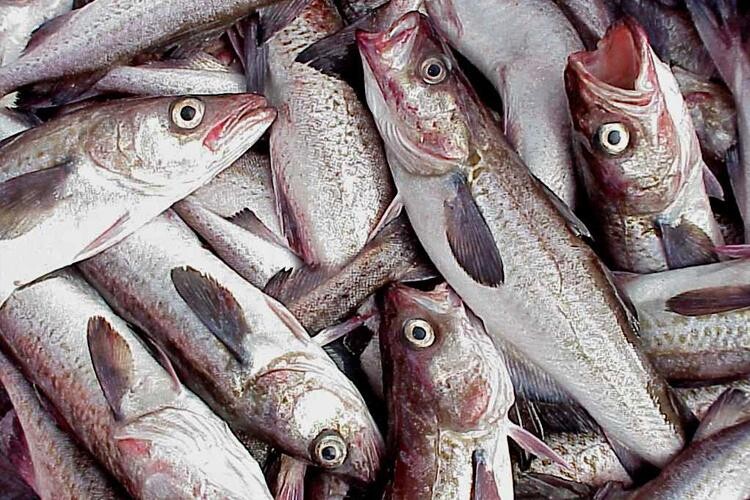The “A” season for wild Alaska pollock officially opened on January 20, and the stakes couldn’t be higher for thousands of Alaskans.
The fishery, one of the largest and most sustainable in the world, is more than a hallmark of responsible resource management—it serves as a lifeline for coastal communities and is a key driver of the state’s economy.
“A” season is a make-or-break time for Unalaska, Kodiak, and other fishing communities and will determine whether they thrive or stare down an uncertain future. Crews are gearing up for weeks at sea, while local businesses work around-the-clock to supply vessels with fuel, equipment, and provisions. This moment is critical not only for the pollock fishery but for the survival of the towns that depend on it to sustain their workforce, families and their future.
The industry has experienced significant challenges in recent years. In December, pollock fishermen faced proposed trawling bans in Prince William Sound. The Alaska Board of Fisheries ultimately rejected the proposals—a decision the board reached after careful examination of data and solid arguments challenging the merits of the proposals. The decision came just weeks after a regulatory closure of the Central Regulatory Area of the Gulf of Alaska pollock fishery, a closure that left many Kodiak fishing and processing families reeling.
“The Central Gulf of Alaska pollock fishery was cut short last fall which had a significant economic impact on Kodiak. Processors, vessels, and support businesses are counting on a successful ‘A’ season pollock fishery to survive,” said Julie Bonney, executive director of the Kodiak-based Alaska Groundfish Data Bank.
Despite several challenging years for Alaska’s fisheries, the Alaska pollock fishery remains a notable bright spot. The Total Allowable Catch (TAC) for 2025 has been set at 1.375 million metric tons in the Bering Sea and 171,000 metric tons in the Gulf of Alaska. The volume of the TAC and the Alaska pollock biomass, a term that refers to the total weight of the pollock population in a specific area, has remained relatively consistent over the years—clear evidence of the sustainable, responsible, science-based way the fishery is managed.
The 2025 fishery’s success will ripple across dozens of communities, driving millions of dollars in economic activity and ensuring stability in regions where opportunities can be few and far between.
The Community Development Quota (CDQ) program, which allocates a portion of the annual Bering Sea pollock harvest to 65 Western Alaska communities, is an example of the far-reaching impact of this important resource. The CDQ program supports local jobs, funds critical infrastructure, and generates revenue that sustains fishing villages. With more than 30 percent of the Bering Sea pollock industry owned by CDQ groups, the economic health of these coastal communities is tied directly to the 2025 season’s outcome.
“The industry has faced considerable setbacks in recent years,” said Aleutian Pribilof Island Community Development Association CEO Luke Fanning. “The success of the pollock fishery is not only critically important for the jobs it creates, the families it supports, and the communities it sustains, but also for the infrastructure and markets it provides for other fisheries like crab, pacific cod and sablefish.”
This season comes at a pivotal time. International competition from Russia’s heavily subsidized pollock industry has driven down fish prices, while domestic policy debates threaten to disrupt fisheries operations. The wild Alaska pollock fishery’s adherence to science-based management and sustainability remains a global standard, and external pressures make the need for a successful season even more urgent.
"We are headed into this 2025 ‘A’ season with three objectives: safety, salmon avoidance and efficiency on the grounds. We have the tools and knowledge to assure all three. A lot is riding on those priorities, and we will succeed as we have in the past,” said Captain Dan Carney, who operators a pollock trawl vessel. “For most of us, this is not just a job but a way of life, and we will continue to do all we can to sustain that—not only for the pollock fishery but for all Alaska fisheries. We are always fishermen first.”
A successful pollock season fuels Alaska’s economy and supports the nation’s seafood industry. Pollock alone contributes nearly $1.5 billion annually in wholesale value, providing products that feed millions worldwide. The fishery also underpins the broader seafood supply chain, sustaining businesses like processing plants, container shipping operations, and port services.
As the vessels set out, the start of “A” Season serves as a reminder of the pollock fishery’s role as an economic and cultural cornerstone. “It is not just about catching fish—it’s about sustaining a way of life for thousands of Alaskans and ensuring the survival of communities that depend on the sea,” said Bonney.
About the Alaska Pollock Fishery Alliance
The Alaska Pollock Fishery Alliance represents a broad range of stakeholders including fishery processors, fishing vessel operators, and customers, as well as Alaska community and economic development organizations. Its work is guided by a committee of pollock trade associations, harvester companies, customers, CDQ program representatives and scientific and policy experts overseen by the Association of Genuine Alaska Pollock Producer’s (GAPP) board of directors. www.alaskapollockfisheryalliance.com.







